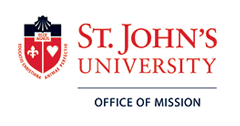Abstract
The purpose of this essay is to make sense of the two divides in the clinical preparation of teacher candidates: (1) between professional knowledge and skilled practice, and (2) between university-based courses and school-based field experiences. This essay extends the work of Lamont and Molnár (2002) to conceptualize symbolic boundaries related to these two divides. Within this framework, a review of the research highlights three main implications. First, teacher education programs need to design teaching and learning experiences that allow teacher candidates to use the professional knowledge they have gained through their university courses across multiple educational settings. Second, such collaborative efforts, we argue, would help bridge the institutions’ approaches to teaching and learning and, therefore, send a more consistent message to teacher candidates about what constitutes professional knowledge and skilled practice in teaching. Third, a rapid and dramatic shift to online learning as a result of the COVID-19 pandemic highlights these divides even further and pushes universities and PK-12 schools to reevaluate how teachers and teacher candidates are developing professional knowledge and skilled practice. Using symbolic boundaries as a framework for understanding existing divides – divides that are likely to shift and change as a result of the COVID-19 pandemic – may help determine how to better prepare today’s teacher candidates for the challenges of classroom teaching.
Recommended Citation
Cerezci, Bilge and McClure, Donald
(2020)
"Symbolic Boundaries and the Clinical Preparation of Teacher Candidates,"
Journal of Vincentian Social Action: Vol. 5:
Iss.
2, Article 7.
Available at:
https://scholar.stjohns.edu/jovsa/vol5/iss2/7
Included in
Arts and Humanities Commons, Business Commons, Curriculum and Instruction Commons, Curriculum and Social Inquiry Commons, Disability and Equity in Education Commons, Educational Methods Commons, Law Commons, Life Sciences Commons, Medicine and Health Sciences Commons, Scholarship of Teaching and Learning Commons, Urban Studies and Planning Commons

